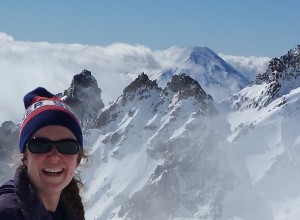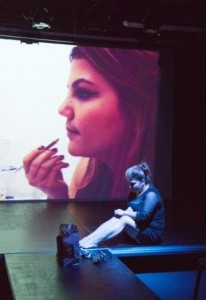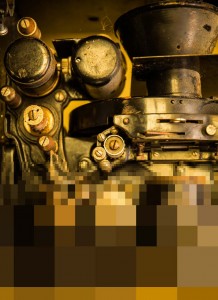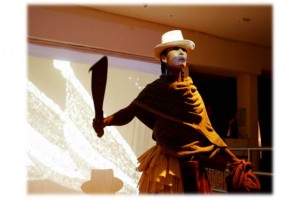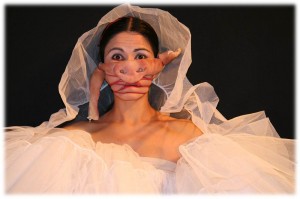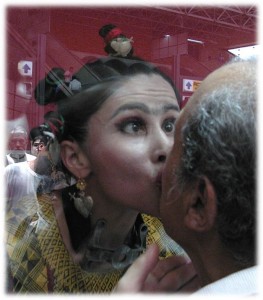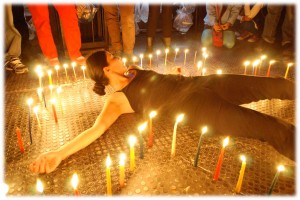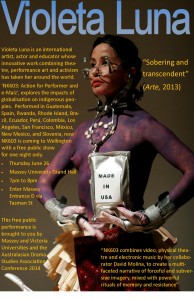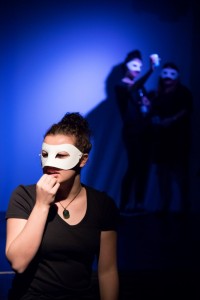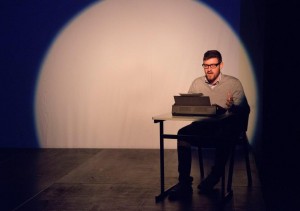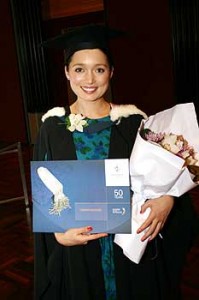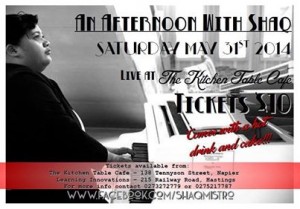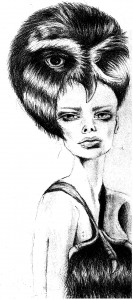Staff and students from the School of English & Media Studies enjoyed the stunning view from their ‘office’ yesterday as they undertook fieldwork on Mt Ruapehu.
Associate Professor Elspeth Tilley and Bachelor of Communication students Oscar Mein and Eden Cowley helped collect data about people’s behaviour during a lahar warning test run by GNS Science and the Department of Conservation.
The fieldwork is part of a research collaboration investigating ways to optimise safety communication at the skifields that includes English & Media Studies staff and students and Massey’s Joint Centre for Disaster Research. Some of the issues for mountain users include lahar warnings, avalanche risk and general mountain safety.
“The agencies in the front line of mountain safety such as GNS Science and Department of Conservation have been working together for many years and have very good data about the risks and about public behaviour,” Dr Tilley said. “As we saw at the lahar warning test yesterday, though, it’s still the case that not every mountain user knows what to do. When the siren sounds, people need to immediately get out of the valley floor and climb to higher ground – some do, others do only when other public-minded bystanders call out to them repeatedly or a ski patroller moves them, and some remain where they are, hypothetically in the path of a massive fast-flowing gush of boiling water, sediment and boulders.”
“The next step in the research is to identify the missing link between someone knowing about a risk and responding appropriately. We also need to know more about those mountain users who genuinely aren’t aware of the risks or how to mitigate them.”
“That’s where communication staff and students can make a big contribution. We’ll be bringing a humanistic or people-centred approach to understanding the communication processes. Some of our students will have the opportunity to extend the research with funded postgraduate study, living on the mountain next ski season and conducting ethnographic and focus group research to identify communication patterns and norms, and make recommendations about how, when and where to create the most effective safety messaging.”
Dr Tilley said understanding ‘mountain culture’ could be the key to unlocking the right communication tactics. “Groups of people who share an interest and affinity, such as for family ski trips, snowboarding weekends or climbing expeditions, create and define their own group culture. They establish behaviours, thoughts, and norms that define their identity as a member of the group.
“Effective communication occurs when the identity that a message assigns to a person matches the identity she or he wants to claim in a situation – so to target a particular group, you have to have very good research about how they construct their identity as a group and what notions of identity are appealing.”
“Creativity also has a big role to play. As well as documenting the culture and its communication, our students will need to make innovative and creative recommendations about practical ways to communicate that produce a positive sense of identity that includes being knowledgeable and proactive about safety.”
Yesterday’s lahar warning test research project activity was recorded by Alison Ballance, producer and presenter of Radio New Zealand’s weekly science and environment programme Our Changing World. Alison’s story on the project will be aired on RNZ in the next week: go to http://www.radionz.co.nz/national/programmes/ourchangingworld/20140911 for the story and the podcast.
Links to more information:
- Ruapehu Lahar information from DOC: http://www.doc.govt.nz/documents/about-doc/concessions-and-permits/conservation-revealed/lahars-from-mt-ruapehu-lowres.pdf
- Footage of the 2007 Mt Ruapehu lahar: https://www.youtube.com/watch?v=5x5tZAHEoRU
- TVNZ 4-minute video about Ruapehu lahars: http://tvnz.co.nz/meet-the-locals/2007-episode-81-video-1883399
